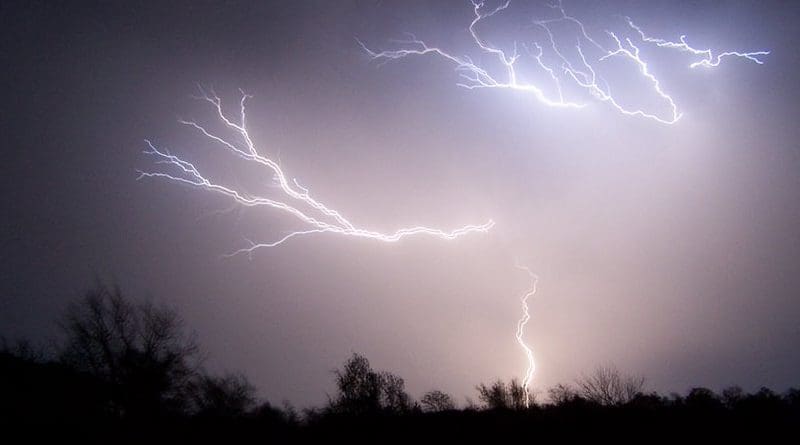Machine Learning Helps Predict If Storms Will Cause Blackouts
Thunderstorms are common all over the world in summer. As well as spoiling afternoons in the park, lightning, rain and strong winds can damage power grids and cause electricity blackouts. It’s easy to tell when a storm is coming, but electricity companies want to be able to predict which ones have the potential to damage their infrastructure.
Machine learning – when computers find patterns in existing data which enable them to make predictions for new data – is ideal for predicting which storms might cause blackouts. Roope Tervo, a software architect at the Finnish Meteorological Institute (FMI) and PhD researcher at Aalto university in Professor Alex Jung’s research group has developed a machine learning approach to predict the severity of storms.
The first step of teaching the computer how to categorise the storms was by providing them with data from power-outages. Three Finnish energy companies, Järvi-Suomen Energia, Loiste Sähkoverkko, and Imatra Seudun Sähkönsiirto, who have power grids through storm-prone central Finland, provided data about the amount of power disruptions to their network. Storms were sorted into 4 classes. A class 0 storm didn’t knock out electricity to any power transformers. A class 1 storm cut-off up to 10% of transformers, a class 2 up to 50%, and a class 3 storm cut power to over 50% of the transformers.
The next step was taking the data from the storms that FMI had, and making it easy for the computer to understand. “We used a new object-based approach to preparing the data, which was makes this work exciting” said Roope. “Storms are made up of many elements that can indicate how damaging they can be: surface area, wind speed, temperature and pressure, to name a few. By grouping 16 different features of each storm, we were able to train the computer to recognize when storms will be damaging”.
The results were promising: the algorithm was very good at predicting which storms would be a class 0 and cause no damage, and which storms would be at least a class 3 and cause lots of damage. The researchers are adding more data for storms into the model to help improve the ability to tell class 1 and 2 storms apart from each other, to make the prediction tools even more useful to the energy companies.
“Our next step is to try and refine the model so it works for more weather than just summer storms,” said Roope, “as we all know, there can be big storms in winter in Finland, but they work differently to summer storms so we need different methods to predict their potential damage”

